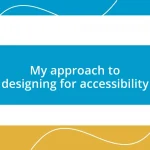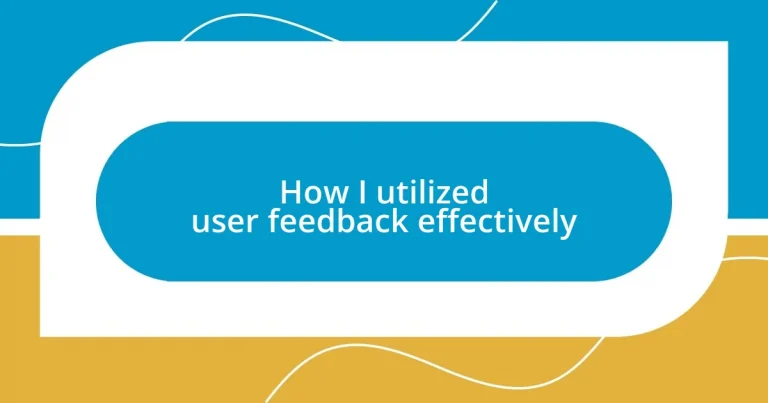Key takeaways:
- Direct interactions and social media provide deeper insights compared to standard surveys, highlighting the value of raw, unfiltered feedback.
- Implementing a color-coding system for feedback simplifies analysis and identifies actionable themes quickly.
- Integrating user feedback into product design can result in significant improvements, emphasizing the importance of aligning changes with core goals.
- Creating user feedback loops fosters stronger relationships and demonstrates to users that their input is valued and impactful.
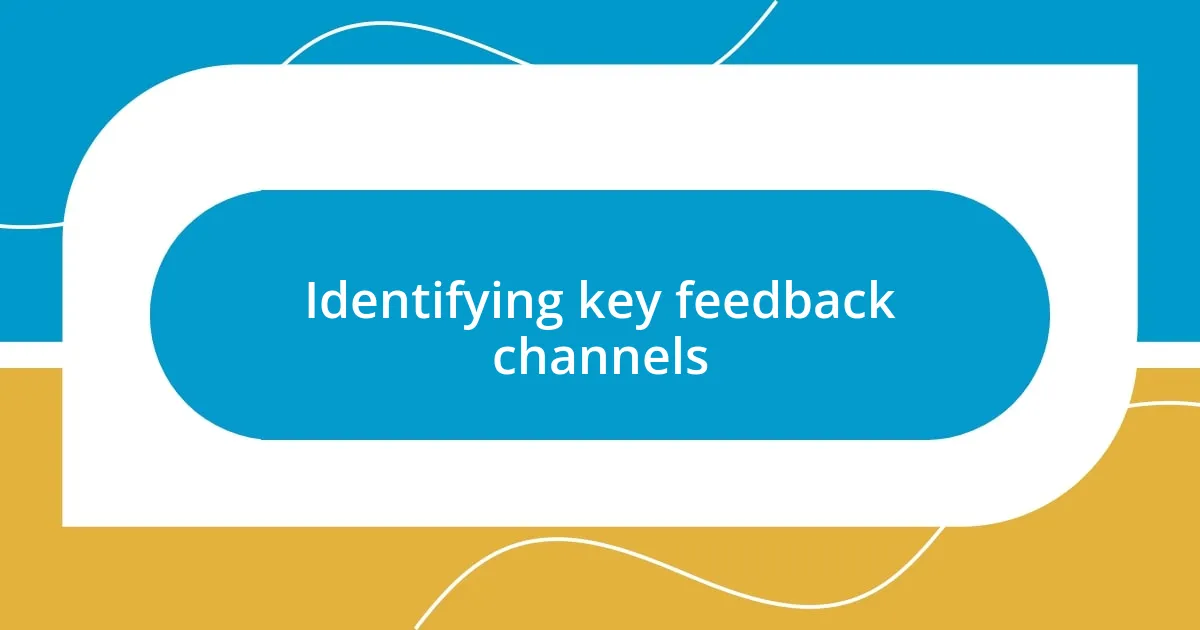
Identifying key feedback channels
When I first started gathering user feedback, I quickly realized that not all channels are created equal. I was surprised to find that direct interactions, like one-on-one interviews, offered deeper insights than standard surveys. Have you ever had a conversation that changed your entire perspective? I certainly have, and those moments are what I now consider invaluable.
Social media turned out to be another powerful channel for feedback. I vividly remember the thrill of seeing a tweet that praised our product while also pointing out a flaw. It felt like a treasure map, guiding me toward areas that needed improvement. This real-time feedback made me question—how can we harness this raw, unfiltered communication more effectively?
Lastly, I found that community forums were goldmines for user sentiment. I often scrolled through threads, absorbing opinions and experiences shared by our users. It was like being part of a conversation that I never initiated but left me inspired and informed. Have you explored these communities? You might find that users are eager to talk about their needs and your products in ways you never expected.
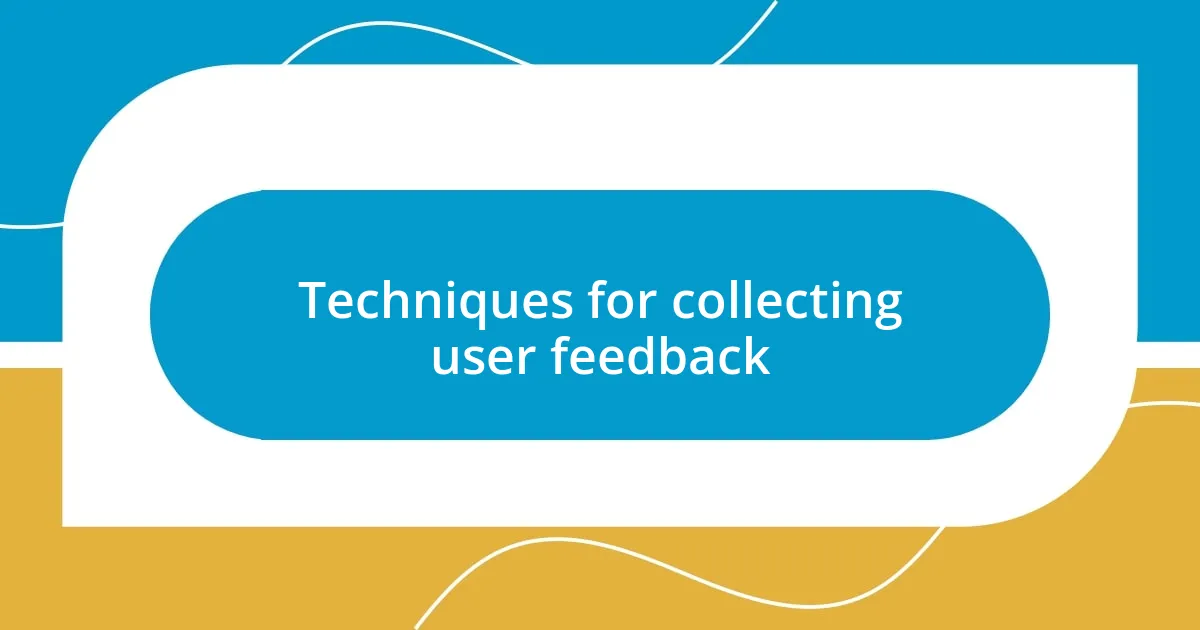
Techniques for collecting user feedback
Collecting user feedback is an art, and there are several techniques I’ve found particularly effective. One of my go-to methods has been using online surveys, as they allow users to share their thoughts at their convenience. I remember conducting a survey after a product launch; the responses came flooding in, and I felt a mix of anticipation and curiosity as I read each comment. It was as if I was opening a treasure chest full of ideas and suggestions.
- Online Surveys: Easy to administer and analyze, allowing broader reach.
- Focus Groups: Bring together diverse users to gain richer, qualitative insights.
- Usability Testing: Observing users interact with your product can uncover hidden pain points.
- Customer Support Interactions: Analyzing support tickets reveals common issues and user frustrations.
- In-App Feedback: Implementing feedback prompts can capture spontaneous thoughts while users engage with your product.
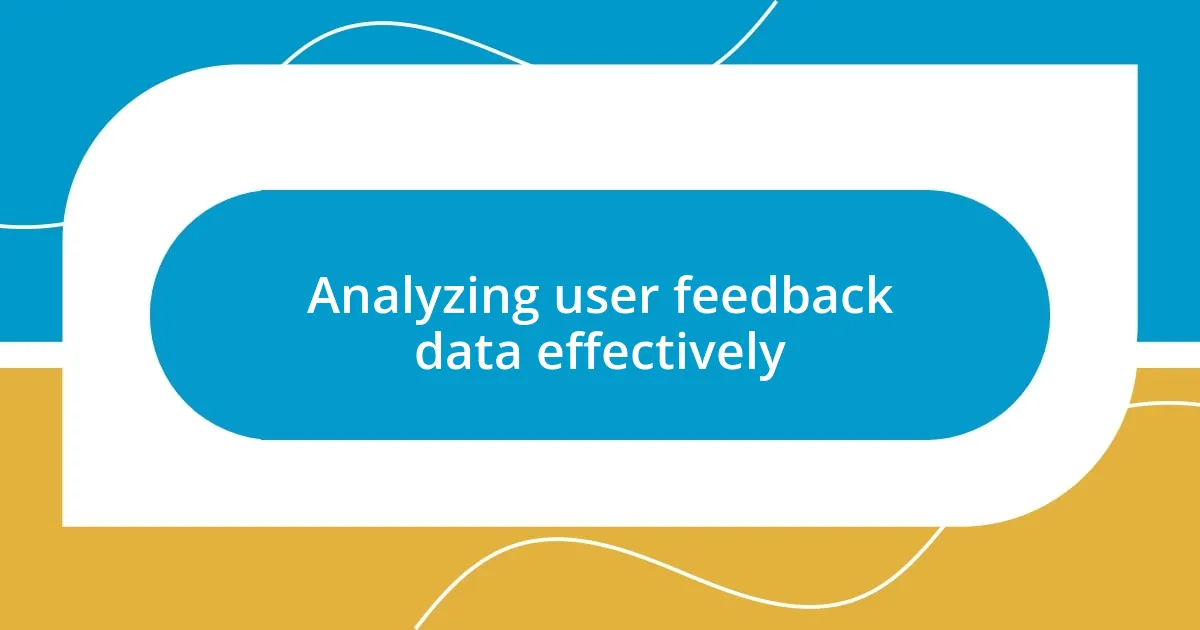
Analyzing user feedback data effectively
To analyze user feedback data effectively, I’ve learned the importance of categorizing feedback into actionable themes. Initially, I took an overwhelming amount of feedback at face value, but that quickly became chaotic. I started using a color-coding system for comments—green for praise, yellow for suggestions, and red for complaints. This method not only simplified my analysis but also turned feedback into a visual dashboard. Have you ever experienced the relief of seeing things clearly? It felt like the fog lifted, allowing me to focus my efforts where they were most needed.
One of the most beneficial practices I adopted was pairing quantitative data with qualitative insights. When I examined survey results, I didn’t just look at the numbers; I revisited the written comments. I remember finding a numerical rating of 3 out of 5 that felt disappointing, but an accompanying comment revealed a user’s genuine admiration for our team. That perspective shift changed how I interpreted the ratings. Does that make sense? The story behind the numbers can sometimes provide richer context that guides our next steps even better than figures alone.
Lastly, I implemented periodic reviews of the feedback data with my team. These discussions created a space for brainstorming and reflection, allowing us to bring diverse perspectives to the table. While collating the data one afternoon, I felt a buzz of excitement as my colleagues shared their thoughts and suggestions. It reminded me how collaboration can transform how we interpret feedback. Have you ever felt that energy in a team meeting? It’s invigorating and often leads to breakthroughs that wouldn’t surface in isolation.
| Method | Description |
|---|---|
| Color-Coding Feedback | Visual categorization for actionable insights |
| Quantitative vs. Qualitative | Combining data with user comments for context |
| Team Review Sessions | Collaborative discussions that yield new perspectives |
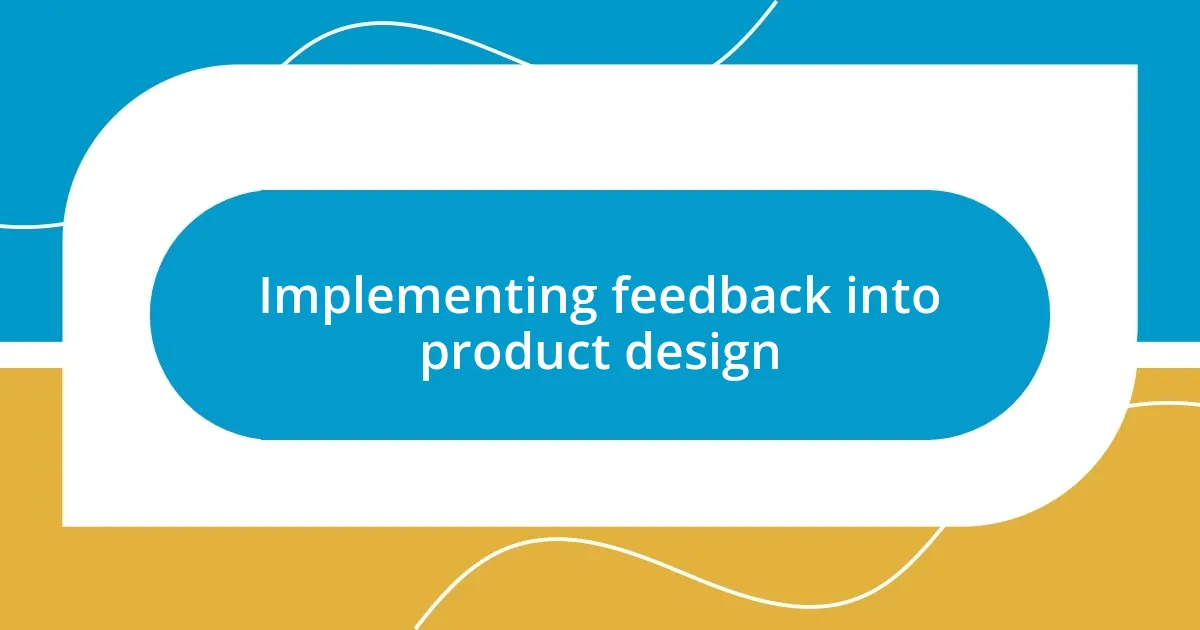
Implementing feedback into product design
Implementing user feedback into product design is where the real magic happens. One time, after gathering insights from usability tests, I was struck by how users struggled with a feature I thought was seamless. Their frustrations prompted me to tweak the design significantly, resulting in a more intuitive interface. Have you ever felt that urge to improve something when you see it through someone else’s eyes? The difference in user engagement was remarkable, reinforcing the importance of their perspectives in shaping a better product.
As I integrated feedback, I also made a point to prioritize the suggestions that aligned most closely with our core goals. I recall one particularly enlightening focus group session where users highlighted a feature they felt was missing. Instead of diving headfirst into adding what they wanted, I took a moment to consider our overall vision. I asked myself, “Will this enrich the user experience or distract from our primary purpose?” This kind of reflection helps ensure that changes enhance the product rather than complicating it. That balance is crucial in making effective design decisions.
Ultimately, I found that sharing feedback openly with my team cultivated a culture of collaboration. One afternoon, as we delved into user feedback together, it felt less like a chore and more like a shared mission. I remember one of my team members expressing genuine surprise at how many users had similar suggestions. It was a lightbulb moment for us, transforming what could have been a disjointed effort into a unified drive toward improvement. Does it surprise you how collective insights can reshape a product’s trajectory? I believe that champions of user feedback understand the power of collaboration and embrace it wholeheartedly.
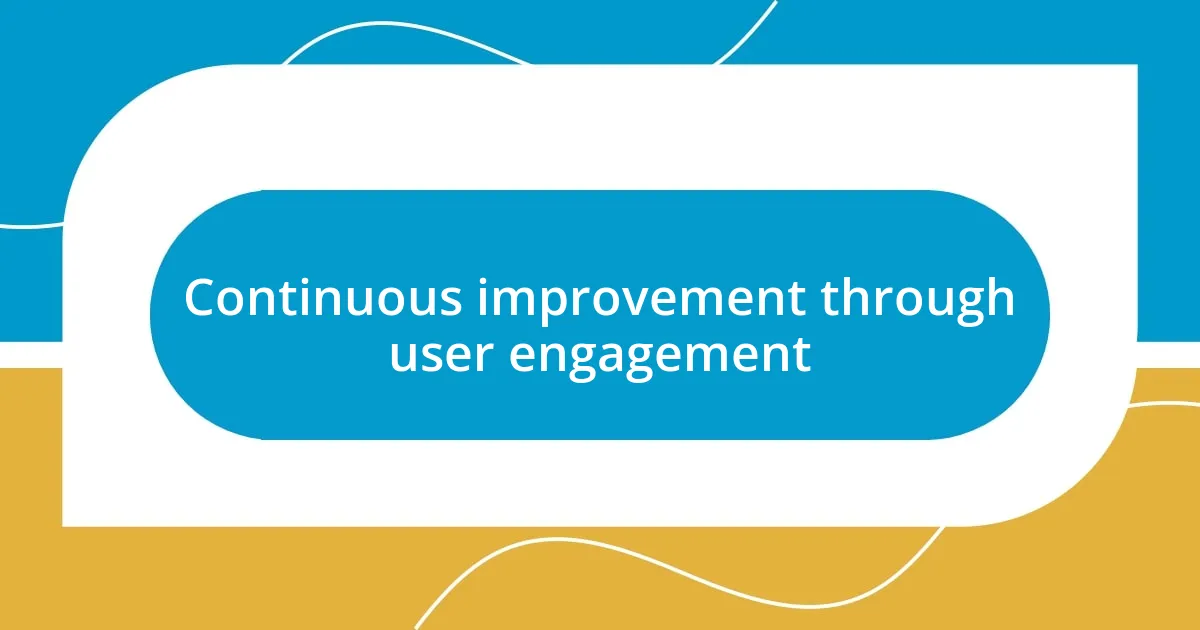
Continuous improvement through user engagement
When I think about continuous improvement through user engagement, I realize it’s a dynamic process. User feedback doesn’t just sit in a folder; it’s alive and breathing. I often find myself revisiting user comments from previous projects, discovering new ideas hidden within them. It’s like finding treasures in old boxes—you never know what might inspire your next innovation. Has that happened to you, where past feedback suddenly clicks with a current challenge? It feels like a light bulb moment.
In my experience, frequent check-ins with users can be transformative. I recall a project where I held monthly interviews with a few key users. Their candid insights revealed not just what they liked; they shared their frustrations and dreams for the product. Listening to their stories made me feel more connected to the user community. Each meeting left me energized, and I sensed that we were growing a much stronger relationship. Can you relate to that sense of connection?
Another powerful approach I discovered was creating user feedback loops. I’d send prototypes back to users for their opinions after making adjustments based on previous feedback. I’ll never forget the moment one user replied, “This feels like it was designed just for me!” That personal touch, where they sense their voice mattered, can be incredibly motivating. It deepened their engagement and made it clear that we were continuously evolving together. Isn’t it amazing how simple gestures can create such profound connections?










